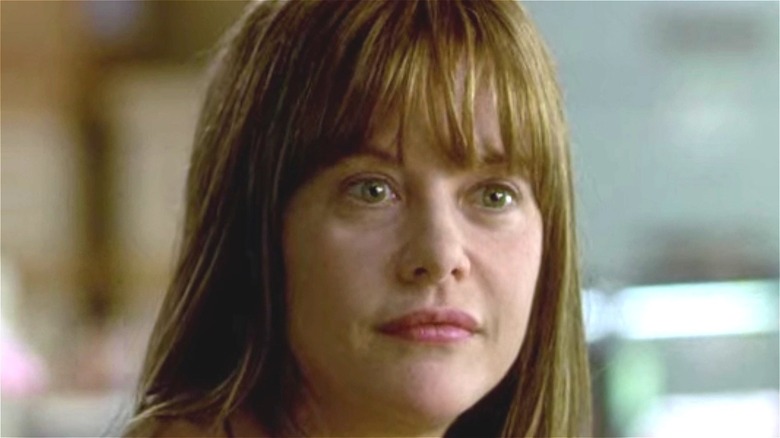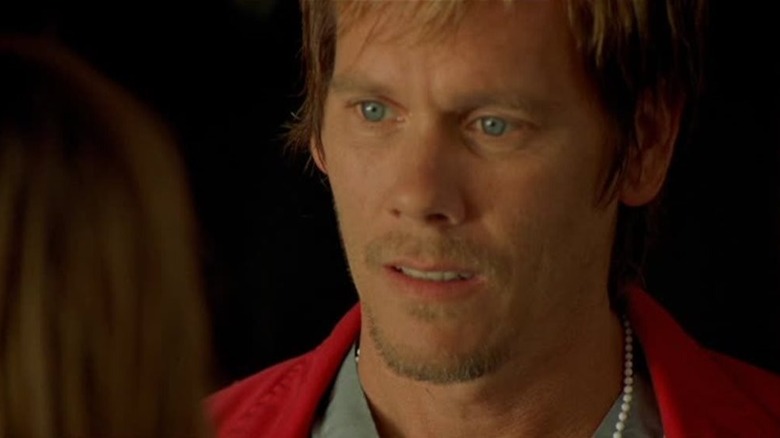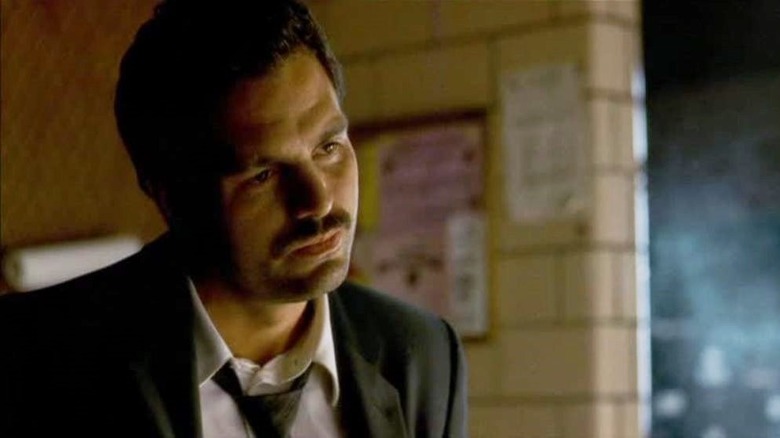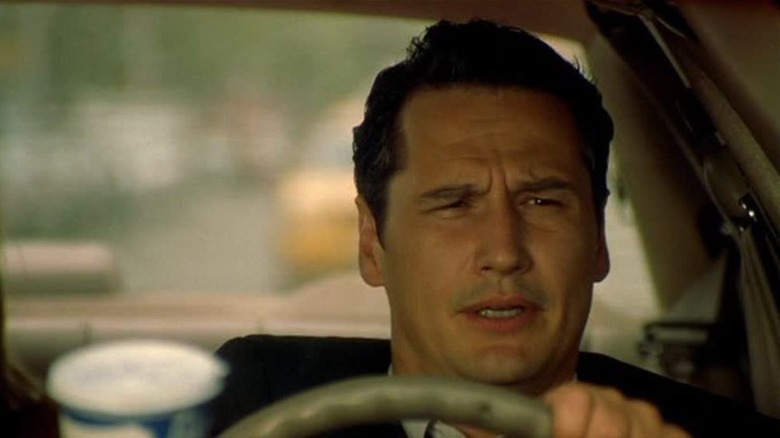The Ending Of In The Cut Explained
In 2003, a psychological murder mystery like few before or after it emerged. "In the Cut" is a brutal thriller that could easily be compared to classics of the genre such as "Se7en," and its sheer ruthlessness is only enhanced by the fact that much of the talent attached is known from very, very different types of films. Directed by Jane Campion (who is known for films like "The Piano" and "The Power of the Dog"), and starring Meg Ryan ("When Harry Met Sally," Sleepless in Seattle"), Mark Ruffalo (Bruce Banner in the Marvel Cinematic Universe), and Jennifer Jason Leigh ("Weeds," "The Hateful Eight")
"In the Cut" may have failed at impressing the critics when it came out (via Rotten Tomatoes), but its dark, threatening mood — which is expressed through a female viewpoint character who's just about as far as you can get from a hardboiled detective archetype — can easily be seen as a trailblazer for more recent films like "The Girl on the Train." As is so often the case with this particular genre, the movie's final moments are far from predictable, and could even leave a casual viewer scratching their head. Knowing this, here's the ending of "In The Cut" explained.
Two creepy guys, two false flags
The plot of "In the Cut" centers on Frannie Avery (Ryan), a withdrawn teacher whose life becomes entwined with a particularly gruesome serial killer case. The murderer, who targets on women, plants a limb of one of his victims in the garden of her home ... and hoo boy, does Frannie have a whole bunch of potential suspects in her immediate vicinity. Two of the weirder folks in her life are Cornelius Webb (Sharrieff Pugh) — a student with some fairly loopy ideas about serial killers and their motives and, as it turns out, an extremely dangerous fixation with Frannie — and John Graham (Kevin Bacon), a clingy ex.
The movie frames both of these guys as potential suspects, and Cornelius is even questioned by the police (writing a school assignment about serial killers with blood tends to do that). While both of them are certainly worrying presences, though, neither is ultimately the final villain of the story. Misdirection is pretty much what you'd expect from a murder mystery thriller, but the fact that these characters are both incredibly shady in their own right makes it easy to believe that either of them might easily be the killer.
The truth behind the tattoo revealed
Even amidst all the death and intimacy, the biggest visual plot point of "In the Cut" is the mysterious tattoo of the three of spades playing card. Early in the movie, Frannie spots the tattoo in the wrist of a shady guy, who eventually turns out to be the likely killer. When she finds out that the tattoo belongs to Detective Malloy (Ruffalo), a cop on the serial killer case that she becomes intimately involved with, the writing's seemingly on the wall.
However, the end of the movie reveals that there are actually two people who sport the same tattoo, and while Malloy might be somewhat forward, he's no killer. He simply got a matching tattoo with his partner when they cracked their first big case. Unfortunately for Frannie, by the time she figures this out, she's already incapacitated the innocent Malloy, and is now alone with the true killer.
While someone who has seen these kinds of films before might attest that Malloy is far too obvious a culprit, it must be noted that this is perfectly in line with what Frannie would likely think in real life, as well. Apart from being an English teacher who's absurdly out of her depth, she's already lost her beloved sister Pauline (Jennifer Jason Leigh) to the killer. When she finds out that Malloy has the suspicious tattoo, and that he carries around a part of her bracelet that she lost during an attack early in the film, it's really not hard to understand her point of view. Though all of this turns out to be a pile of unfortunate coincidences, it's more than enough to create a cloud of suspicion that even Mark Ruffalo's charming mustache can't hope to dissipate.
The true killer emerges
Of course, poor Mark Ruffalo is still ultimately too obvious a culprit, and once the whole tattoo thing is cleared out, it becomes evident that the killer is actually his partner, Detective Rodriguez (Nick Damici). Rodriguez — who, of course, is the guy Malloy got those matching tattoos with – has been hovering on the outskirts of the events for the majority of the movie, constantly turning up at incredibly convenient moments.
Thanks to the fact that the movie keeps throwing increasingly creepy guys at poor Frannie, the comparatively bland and sympathetic-seeming Rodriguez is easy to ignore right up until the climax, when the suspicious heroine has left Malloy handcuffed in her apartment. Rodriguez, who once again "happens" to hang out in the vicinity, drives her to a nearby lighthouse. There, Frannie finally finds out about the tattoo, and after the inevitable struggle with the deranged killer, she manages to save the day, thanks to the fact that she's carrying Malloy's gun.
The reveal is an effective last-minute twist, but the final moments of the movie tease a confrontation that's even more unnerving than the battle between Frannie and Rodriguez. The exhausted and bloody Frannie returns to her home, and simply lies down next to Malloy, who's still chained up. There's probably a pretty interesting arthouse movie in the conversation those two are going to need to have in the immediate vicinity — but unfortunately, that one'll have to play out in your imagination.



